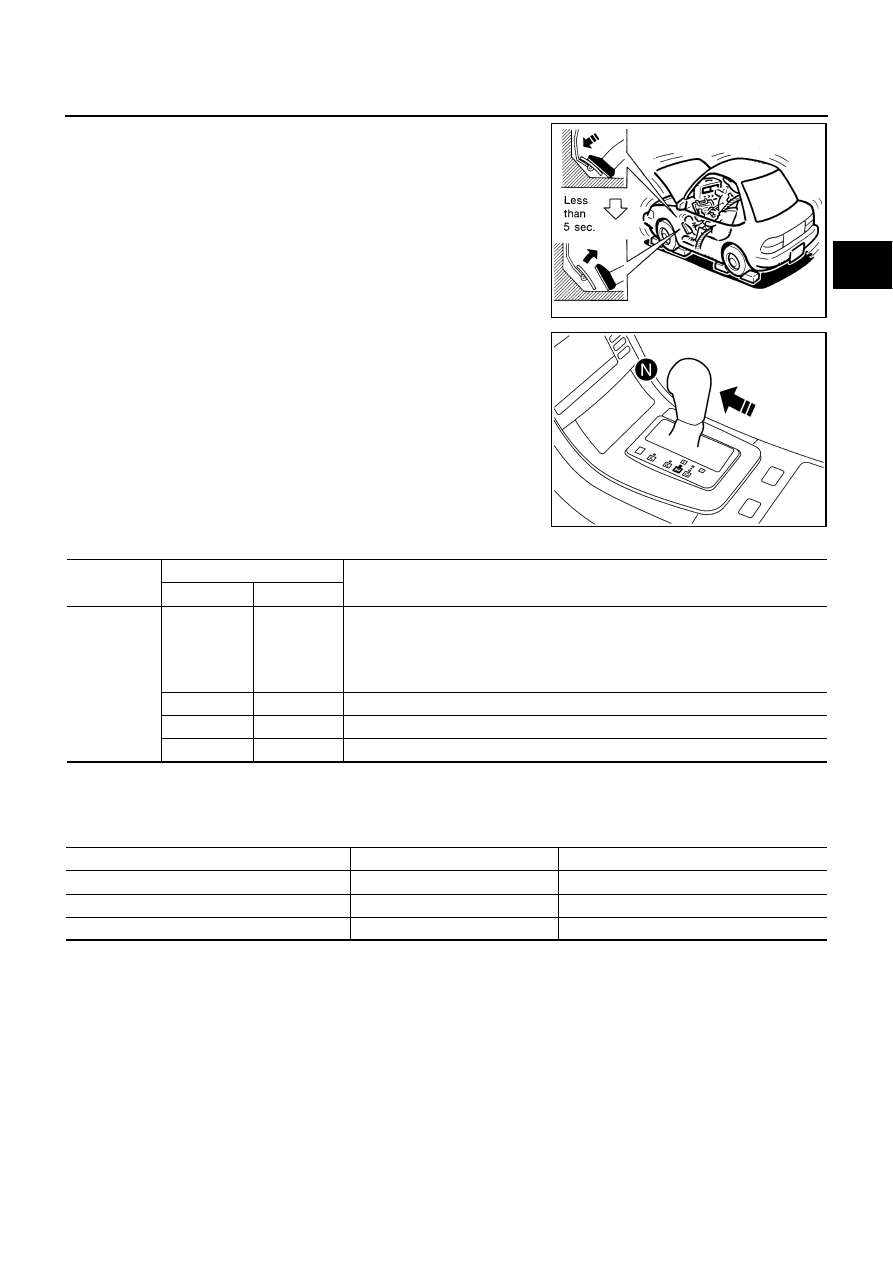Infiniti G35 (V35). Manual - part 15

TROUBLE DIAGNOSIS
AT-51
D
E
F
G
H
I
J
K
L
M
A
B
AT
5.
While holding down the foot brake, gradually press down the
accelerator pedal.
6.
Quickly read off the stall speed, then quickly remove your foot
from the accelerator pedal.
CAUTION:
Do not hold down the accelerator pedal for more than 5 sec-
onds during this test.
7.
Move the selector lever to the “N” position.
8.
Cool down the ATF.
CAUTION:
Run the engine at idle for at least one minute.
9.
Repeat steps 5 through 8 with selector lever in “R” position.
Judgment Stall Test
O: Stall speed within standard value position
H: Stall speed higher than standard value
L: Stall speed lower than standard value
Stall test standard value position
Stall speed:
2,650 - 2,950 rpm
SAT514G
SCIA6230E
Selector lever position
Expected problem location
“D”, “M”
“R”
Stall speed
H
O
●
Forward brake
●
Forward one-way clutch
●
1st one-way clutch
●
3rd one-way clutch
O
H
●
Reverse brake
L
L
●
Engine and torque converter one-way clutch
H
H
●
Line pressure low
Does not shift up “D”, “M” position 1
→
2
Slipping in 2nd, 3rd or 4th gear
Direct clutch slippage
Does not shift up “D”, “M” position 2
→
3
Slipping in 3rd, 4th or 5th gear
high and low reverse clutch slippage
Does not shift up “D”, “M” position 3
→
4
Slipping in 4th or 5th gear
Input clutch slippage
Does not shift up “D”, “M” position 4
→
5
Slipping in 5th gear
Front brake slippage